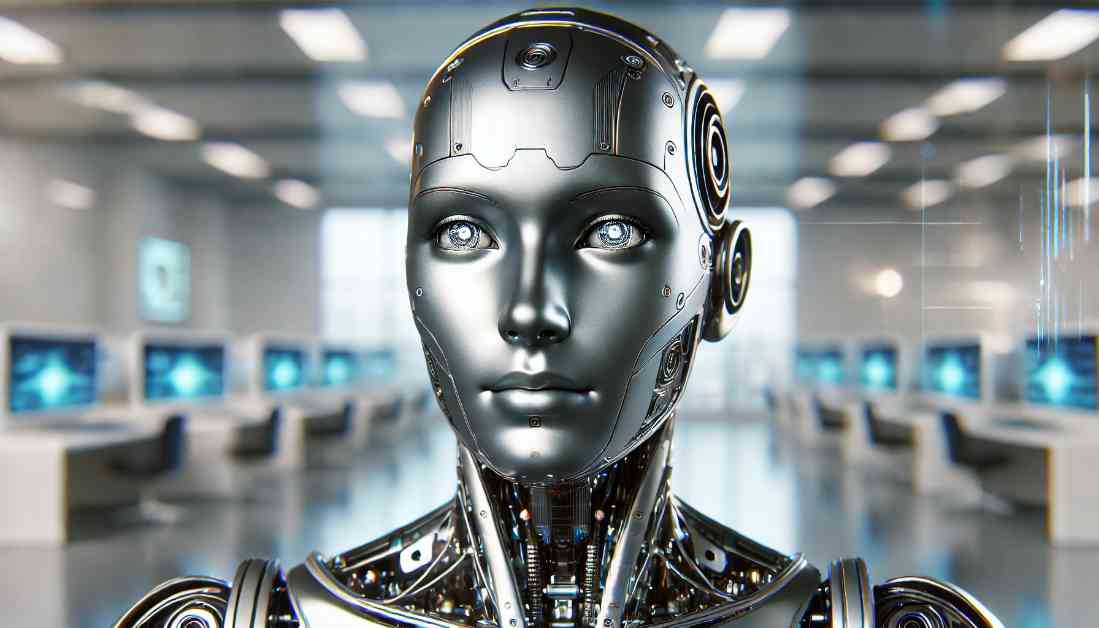In the ever-evolving landscape of technology, there are several key innovations that are shaping the future of humanity. These advancements are not only revolutionizing industries but also impacting the way we live, work, and interact with the world around us. From Artificial Intelligence (AI) to LiDAR, robotics, quantum computing, and biotechnology, these technologies are paving the way for a brighter tomorrow.
Artificial Intelligence (AI)
Artificial Intelligence, or AI, has been a transformative force in various industries for years. However, recent advancements in deep learning models have taken AI to new heights, resulting in a wide range of applications and controversies. Despite the debates surrounding its ethical implications, AI continues to play a crucial role in shaping the future of healthcare, finance, aviation, and beyond.
In the healthcare sector, AI models are being used to develop groundbreaking medications, assist in prognoses, and provide support to patients who lack regular access to healthcare professionals. These AI-driven solutions have the potential to revolutionize the way medical treatments are developed and delivered, ultimately improving patient outcomes and saving lives.
In the financial industry, AI is powering anti-fraud measures that help detect and prevent fraudulent activities. By analyzing patterns and identifying suspicious behavior, AI algorithms can strengthen security measures and protect financial institutions and their customers from cyber threats. Moreover, AI is also utilized in financial trading to analyze market trends and make informed investment decisions.
The aviation sector has also embraced AI technology to optimize operations and enhance customer experiences. AI-powered systems are used to predict demand, adjust pricing strategies, and optimize seat allocation on flights. By leveraging AI algorithms, airlines can maximize their revenue potential and provide a seamless travel experience for passengers.
Light Detection and Ranging (LiDAR)
Light Detection and Ranging, commonly known as LiDAR, is a technology that has revolutionized mapping and data collection in various industries. By emitting laser pulses and measuring the time it takes for them to return, LiDAR systems can create detailed 3D maps of environments with unparalleled accuracy and precision. This technology is widely used in self-driving cars, flood mapping, mining, and archaeology, among other applications.
In the realm of self-driving cars, LiDAR sensors play a crucial role in enabling vehicles to navigate safely and avoid obstacles on the road. By providing real-time data on the surrounding environment, LiDAR systems help autonomous vehicles make informed decisions and ensure passenger safety. Additionally, LiDAR technology is utilized in flood mapping to predict and mitigate the impact of natural disasters by identifying high-risk areas and facilitating emergency response efforts.
In the mining industry, LiDAR is used to map quarries and optimize operational efficiency. By creating detailed maps of mining sites, companies can strategically plan their operations, monitor infrastructure, and enhance safety protocols. Moreover, LiDAR technology has been instrumental in archaeology, allowing researchers to visualize and document historical sites with unprecedented detail and accuracy.
Robotics
The field of robotics has witnessed significant advancements in recent years, with robots playing an increasingly vital role in manufacturing, construction, and logistics. While we may not have fully autonomous robot butlers yet, robotics technology has made significant strides in automating tasks that were once performed by humans. From assembling products on factory lines to sorting and transporting goods in warehouses, robots are revolutionizing industries and driving efficiency and productivity.
In manufacturing, robots are used to streamline production processes, increase output, and improve product quality. By performing repetitive tasks with precision and consistency, robots can enhance operational efficiency and reduce labor costs for companies. In construction, robots are utilized for tasks such as bricklaying, demolition, and site inspection, making construction projects safer, faster, and more cost-effective.
In the logistics sector, robots are transforming the way goods are stored, picked, and transported in warehouses and distribution centers. Automated guided vehicles (AGVs) and robotic arms are used to optimize inventory management, fulfill orders, and streamline supply chain operations. As e-commerce continues to grow, the demand for robotic solutions in logistics is expected to increase, driving innovation and efficiency in the industry.
Quantum Computing
Quantum computing is a cutting-edge technology that leverages the principles of quantum mechanics to process information at an unprecedented speed and scale. Unlike traditional computers, which use bits to represent data as either 0 or 1, quantum computers use quantum bits, or qubits, which can exist in multiple states simultaneously. This allows quantum computers to solve complex problems that are beyond the capabilities of classical computers.
In the realm of cybersecurity, quantum computing has the potential to revolutionize encryption and data security. Quantum-resistant algorithms are being developed to protect sensitive information from quantum attacks, ensuring that data remains secure in an increasingly digitized world. Moreover, quantum computing is being used in conjunction with AI and big data analytics to optimize aerospace design, improve manufacturing processes, and enhance military operations.
As quantum computing continues to advance, its impact on various industries is expected to grow exponentially. From accelerating scientific research and drug discovery to revolutionizing financial modeling and climate forecasting, quantum computing has the power to reshape the way we address complex challenges and unlock new opportunities for innovation.
Biotechnology
Biotechnology encompasses a wide range of technologies that manipulate biological systems to develop new products, improve existing processes, and address pressing global challenges. By harnessing the power of genetics, chemistry, and biology, biotechnology is driving advancements in agriculture, healthcare, environmental sustainability, and beyond.
In agriculture, biotechnology plays a pivotal role in increasing crop yields, enhancing food security, and reducing the environmental impact of farming practices. Genetically modified crops are engineered to resist pests, tolerate harsh environmental conditions, and improve nutritional quality, ultimately ensuring a more sustainable and resilient food supply for a growing global population.
In healthcare, biotechnology is revolutionizing the way we diagnose, treat, and prevent diseases. From precision medicine and gene therapy to the development of vaccines and biologics, biotechnological innovations are improving patient outcomes, prolonging lives, and shaping the future of healthcare delivery. Moreover, biotechnology is enabling researchers to study and manipulate biological systems at the molecular level, unlocking new insights into human health and disease.
In the realm of environmental sustainability, biotechnology offers promising solutions to mitigate climate change, reduce pollution, and conserve natural resources. From the production of biofuels and biodegradable plastics to the remediation of contaminated sites and the restoration of ecosystems, biotechnological applications are driving efforts to create a more sustainable and resilient planet for future generations.
In conclusion, the future of humanity is being shaped by a diverse array of technologies that are revolutionizing industries, transforming societies, and unlocking new possibilities for innovation and progress. From Artificial Intelligence and LiDAR to robotics, quantum computing, and biotechnology, these innovations hold the key to a brighter and more sustainable future for all. As we continue to push the boundaries of technological advancement and explore new frontiers of discovery, the possibilities are limitless, and the potential for positive change is boundless.





















